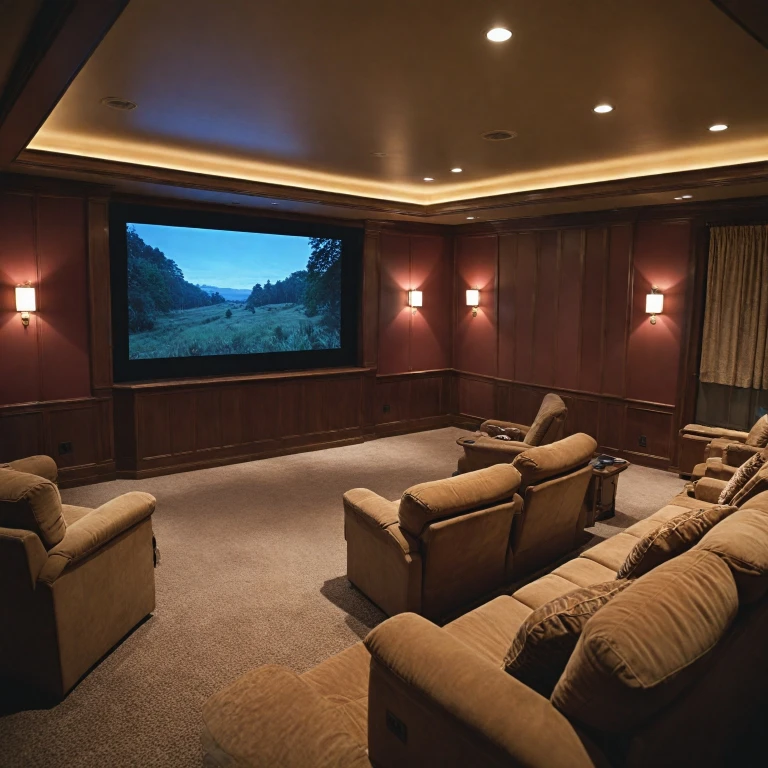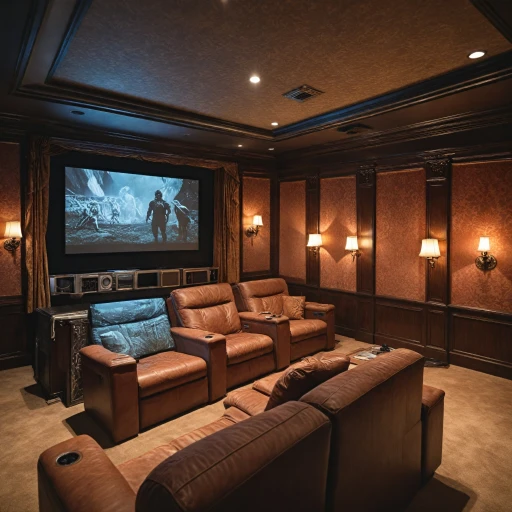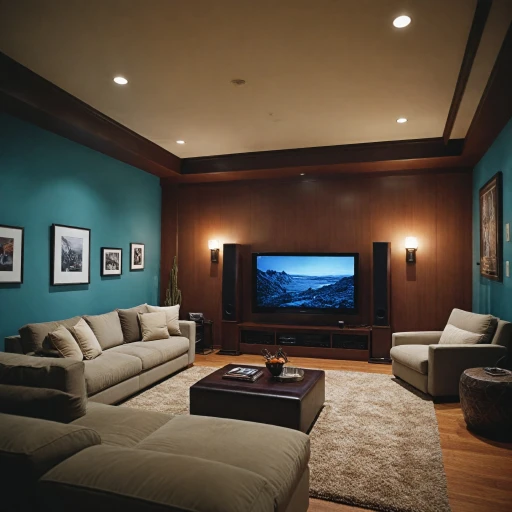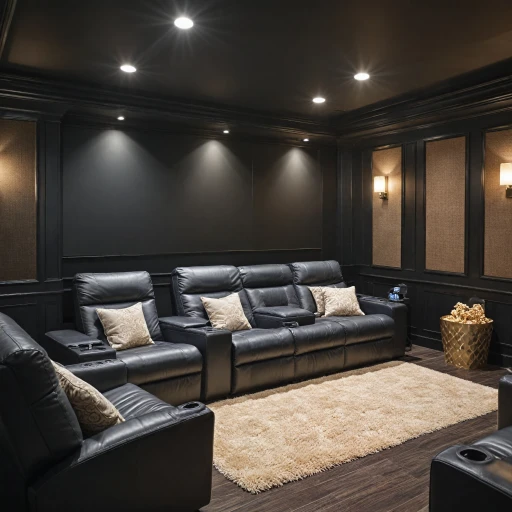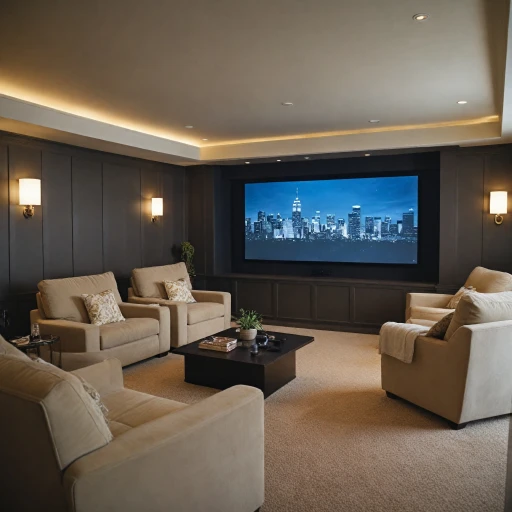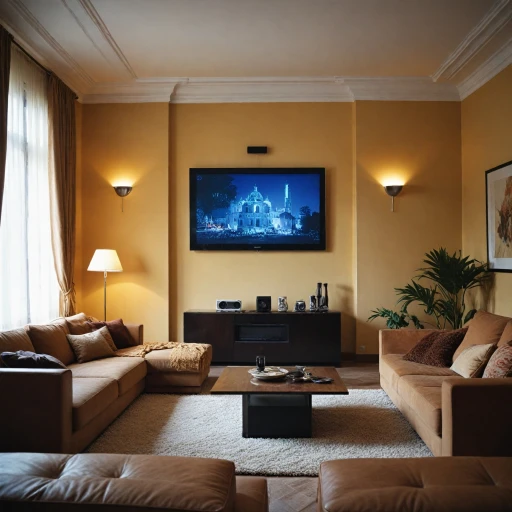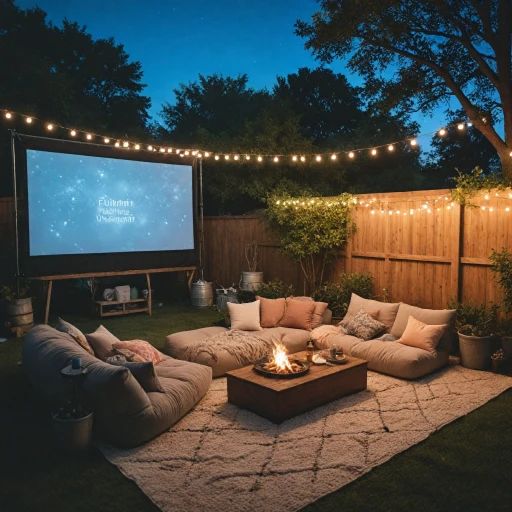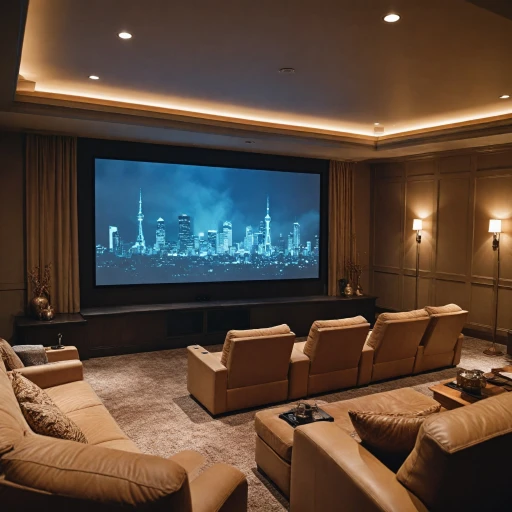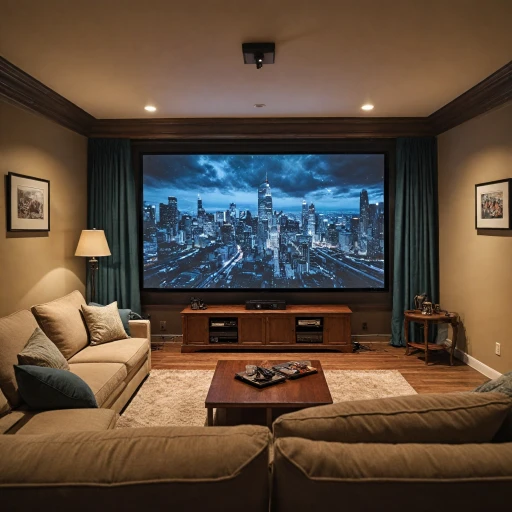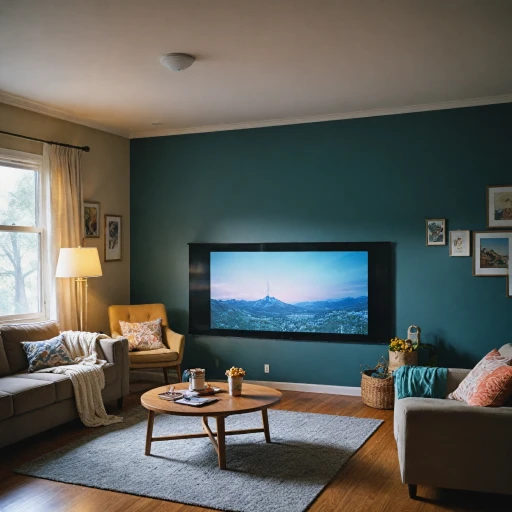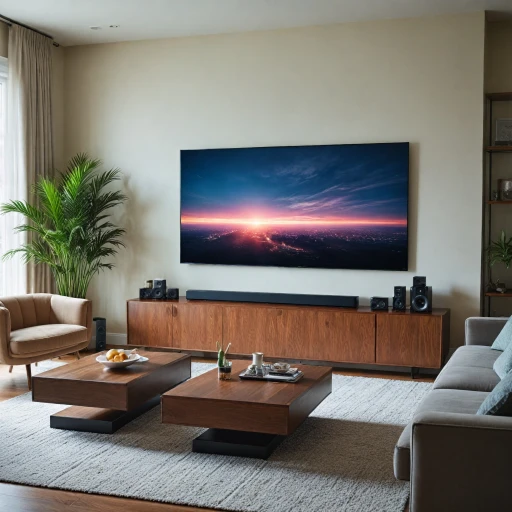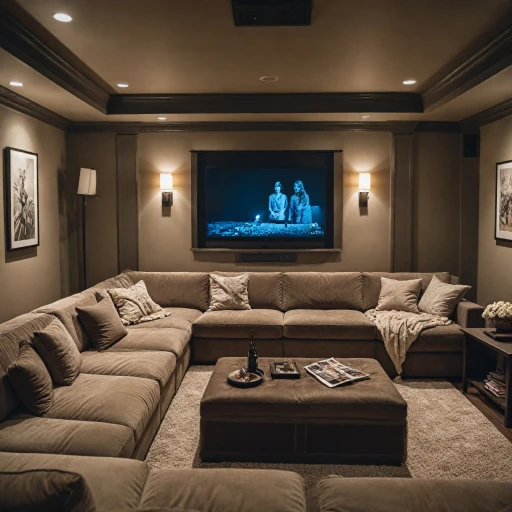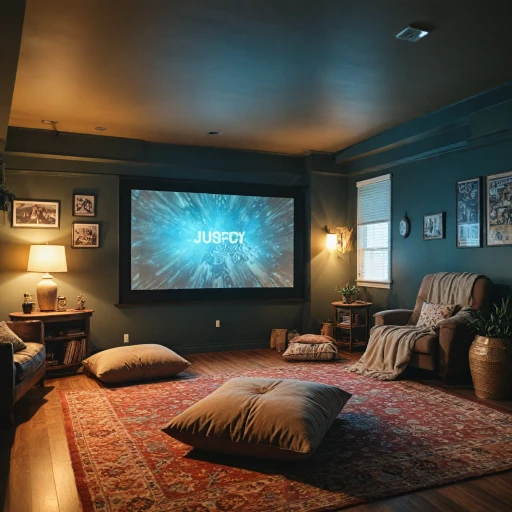
Understanding Projector Screen Types
Exploring the World of Projector Screens
When it comes to setting up a home theater, selecting the right projector screen is essential to achieving the best image quality. The type of screen you choose will greatly impact the overall viewing experience, as it affects both brightness and picture quality. Understanding the different types of screens available can help you make an informed decision.
There are several models of projector screens you may come across, each with their unique features:
- Fixed Frame Screens: These are designed to remain stationary and offer a high-quality viewing experience. They are ideal for dedicated home theaters due to their excellent image quality and viewing angle.
- Portable Projector Screens: If you need flexibility, a portable screen might be a better choice. These screens offer ease of setup and storage, making them suitable for various spaces and purposes.
- Retractable Screens: Suitable for multipurpose rooms, they can be rolled up when not in use. For more on this type, check out enhancing your home theater with a retractable projector screen.
- Ambient Light Rejecting (ALR) Screens: These are engineered to improve visibility in rooms with high ambient light conditions, offering better contrast and color saturation.
- Short Throw and Ultra Short Throw Screens: Designed for projectors that require minimal distance from the screen, these are perfect for smaller spaces.
Choosing the appropriate screen involves considering the specific requirements of your setup, including the type of projector you own and where it will be placed. Navigating the options between elite screens and other brands, as well as determining the right material, will ultimately lead to a satisfying cinematic experience. Ultimately, the task is to balance considerations like the unit price usd, quality, and the various screen attributes to best fit your home theater needs.
Materials Matter: Choosing the Right Screen Fabric
Choosing the Right Fabric for Your Projector Screen
When setting up your home theater, selecting the right screen material is crucial to achieving the best image quality. The type of material will significantly affect your overall viewing experience as it influences factors such as image brightness, light reflection, and color accuracy.
Here are common types of screen materials to consider:
- Matte White: Widely regarded as versatile, matte white screens are great for regular projection setups, offering a balanced contrast and viewing angle. They work best in controlled lighting environments.
- High Contrast Gray: Ideal for rooms with some ambient light, these screens enhance black levels and offer richer color contrast, making them a better choice for darker settings.
- Acoustic Transparent: If you're integrating speakers behind the screen, this material will ensure sound passes through without compromising on picture quality, although screen gain might slightly reduce.
- Ambient Light Rejecting: Designed to deflect ambient light, these screens maintain vivid images even in brightly lit rooms, though they come at a higher price point.
The material choice often aligns with the projector type you're using, such as short throw, ultra short throw, or elite screens. For detailed guidance on material types and their implications on your home theater setup, check out the comprehensive guide on choosing the ideal cinema screen for your home theater.
Whether you're looking for a fixed frame setup or a portable projector solution, ensure your choice of material aligns with your projector's technical specifications and your room's lighting conditions for maximum picture quality.
Size and Aspect Ratio: Finding the Perfect Fit
Finding the Right Dimensions for Your Space
When setting up a home theater, selecting the appropriate size and aspect ratio for your projector screen is crucial. The right dimensions can significantly impact your viewing experience, ensuring that the image quality is both immersive and comfortable for your eyes. Here's what you need to consider:
- Room Size: The size of your room will dictate the maximum screen size you can accommodate. A larger room can handle a bigger screen, while a smaller space might require a more compact option.
- Viewing Distance: The distance between your seating area and the screen should be about 1.5 to 2.5 times the diagonal size of the screen. This ensures that the picture quality remains sharp and the image doesn't appear pixelated.
- Aspect Ratio: Most home theater projectors and screens come in two main aspect ratios: 16:9 and 4:3. The 16:9 ratio is ideal for widescreen viewing, making it the best choice for modern films and TV shows. However, if you're using a projector for presentations or older content, a 4:3 ratio might be more suitable.
Considering Screen Types and Materials
Choosing the right screen type and material is essential for optimizing your projector's performance. Fixed frame screens offer a sleek, professional look, while portable projector screens provide flexibility. The screen material also plays a role in how well it handles ambient light and enhances image brightness. For more insights on selecting the right screen fabric, check out this guide on screen materials.
Balancing Cost and Quality
While it's tempting to go for the largest screen available, it's important to balance size with quality and price. Elite screens and other high-end options might offer superior image quality and durability, but they come at a higher price. Consider your budget and the regular price versus sale price of different models to find the best fit for your needs. Remember, a well-chosen screen can enhance your projector's performance, making it a worthwhile investment.
Installation Tips for a Seamless Setup
Achieving a Seamless Setup with Proper Installation
Creating a successful home theater environment often hinges on the careful installation of your projector screen. With an array of choices ranging from fixed frame to portable projector screens, navigating these options with attention can significantly improve your viewing experience. To begin, it's crucial to address the installation location. Ideally, position your screen opposite the light source to minimize ambient light effects and enhance image quality. This ensures that the brightness and vibrant colors of your projection remain vivid, providing a better theater-like atmosphere. For those opting for fixed frame screens, ensure that the wall you choose can support the installation. Fixed frame options, like those from elite screens, not only offer superior picture quality but also require a sturdy setup. Precise measurements should be taken to ensure the screen is perfectly aligned with your projector’s lens, thereby maintaining the ideal viewing angle and maximizing the potential of your short throw or ultra short throw projectors. In situations where flexibility is key, a portable screen might be the best solution. However, portability doesn’t mean compromising on quality. Portable projector screens, when installed properly, can offer the same sharp images and brightness as their more permanent counterparts. Make sure to adjust the screen material and frame for optimal performance when using these convenient options. Don’t overlook the importance of screen gain, as referenced in earlier discussions about image enhancements, which can significantly influence the perceived brightness and contrast of your projection. Higher gain screens are generally preferred when dealing with a lot of ambient light. Lastly, while the price is always a consideration, investing wisely in your screen installation will pay off in the long run by boosting both the quality and longevity of your home theater setup. Remember, the value of your projection experience goes beyond the price tag—it’s all about the immersive experience that your home theater will deliver.Enhancing Image Quality with Screen Gain
Boosting Picture Quality Through Screen Gain
Optimal image quality is a top priority when configuring your home theater setup. Understanding screen gain can significantly enhance your viewing experience by influencing brightness and clarity. Simply put, screen gain measures how much light a projection screen reflects towards the viewer.A higher gain value results in a brighter image, making it ideal for environments with some ambient light. For example, a gain of 1.5 will reflect 50% more light than a standard matte white screen. This boost in brightness can be advantageous for portable projectors, which often operate at lower brightness levels. However, high-gain screens can narrow the viewing angle, potentially affecting the picture quality for viewers seated at various angles.
On the other hand, a screen with a gain below 1.0 will project a dimmer image, which might not be ideal in settings with minimal control over light exposure. Yet, ultra-short throw projectors paired with lower gain screens can still deliver excellent quality by minimizing reflections from nearby light sources.
When selecting your projector screen, consider not only the gain but also the screen material and how it interacts with your projector's light output. Elite Screens, for instance, offer a range of products that balance gain and screen material to deliver optimal image clarity without compromising on price or quality. Remember, higher gain doesn't automatically mean better; it's all about fitting the right screen to your projector, projection environment, and brightness needs. To ensure you make the best choice, dive into the technical specifications of screens and projectors to cater to your theater's unique conditions.
Budget Considerations: Balancing Cost and Quality
Weighing Cost Against Quality for the Perfect Balance
When diving into the world of projector screens, it’s important to balance your budget with quality to ensure you select the best option for your home theater. First, understand that the screen, alongside the projector, is crucial to the overall viewing experience, playing a significant role in image quality and projection brightness. To find an ideal screen for your budget, consider these factors:- Screen Material: The material affects the screen's ability to manage ambient light and projection qualities like brightness and picture clarity. Options like matte white are cost-effective, but elite screens with special coatings may deliver better image quality, reflecting your investment through crisp visuals.
- Size and Format: Larger screens or those with specific aspect ratios may impact the price due to additional material and specialized framing needs. Consider a fixed frame screen for a more polished look, but be aware of the regular price implications.
- Gain and Viewing Angle: Higher gain screens can enhance brightness but may also raise the unit price. Evaluate your room’s lighting and viewing angles to ensure you're not overpaying for unnecessary features.
- Portable Options: If flexibility is crucial, a portable projector screen offers mobility but consider if the trade-off in quality and stability is worth the reduced cost. Portable screens often come with a lower sale price than elite screens with a fixed setup.
